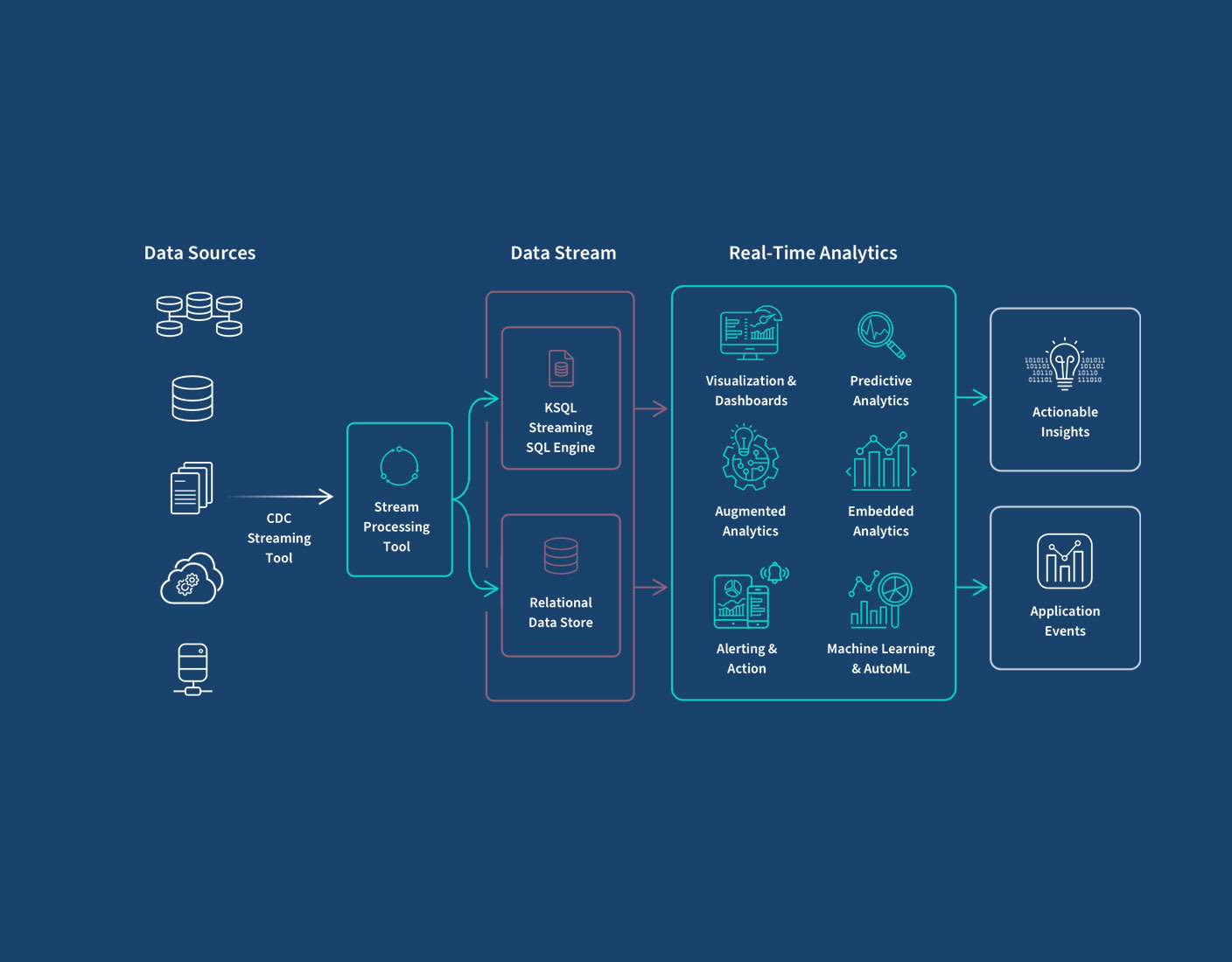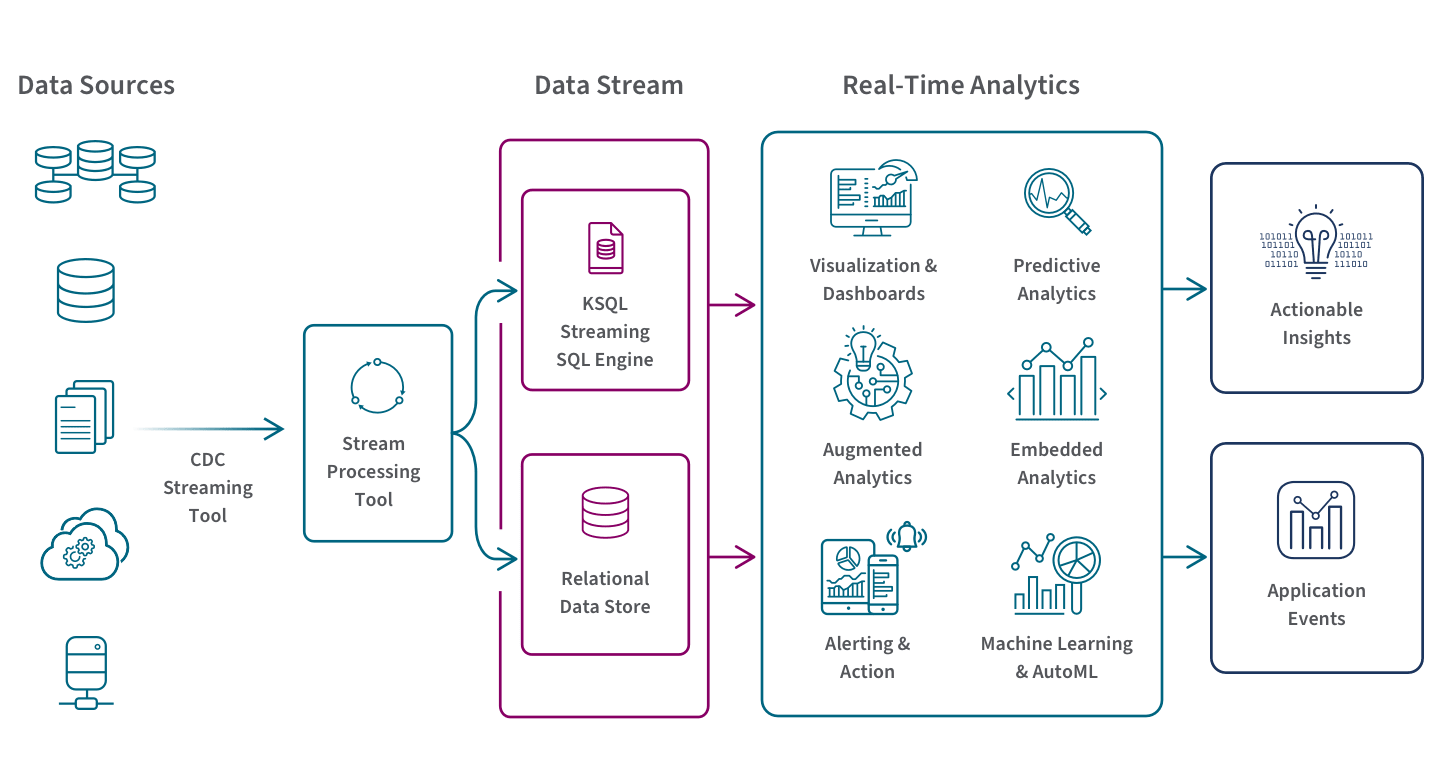Benefits
Real-time analytics is broadly applied in nearly every industry. This is due to the rapid pace of business today, customer expectations for immediate response and personalized recommendations, and the continuing growth of real-time applications, big data, and the Internet of Things (IoT).
The primary overall benefit of real-time analytics is speed. It helps you grow your business by responding to market events faster than your competitors. And it saves you money by identifying issues such as fraud or production problems before they escalate.
Here are the key benefits of real-time data analytics in more detail:
Improve competitiveness and customer satisfaction. Real-time reporting and analytics tools can automatically develop reports, alarms and other actions in response to real-time data. For example, you can have interactive visualizations deliver you real-time insights or you can set rules for you to be notified by text if key performance indicators reach certain levels. You can also have these tools analyze your real-time data, often using machine learning algorithms, and provide in-the-moment insights. This kind of active intelligence helps you respond faster than your competitors to market events and customer issues.
Respond to customers faster with in-the-moment awareness of their behavior and needs.
Develop and refine new products faster by getting real time insights on how your users are interacting with your products.
Optimize campaigns, web sites and apps faster by delivering personalized offers and tests in real time.
Reduce Fraud and Other Losses. Real-time data analytics makes you aware of time-sensitive issues that can result in significant losses, such as inventory outages, cybercrimes, fraud, technology failures, security breaches, and production issues. You can then quickly respond, and perhaps prevent, issues before they grow.
Be more efficient. A real-time analytics platform can also improve efficiency across your organization. For example, people analytics will have up to date information on employee engagement, the IT department can focus on other priorities as the volume of custom queries decreases, and executives can make decisions much faster when they don’t need to wait for data to be updated. The best real-time analytics tools enable predictive analytics to guide your decision making and prescriptive analytics to automatically recommend the optimal course of action.















































